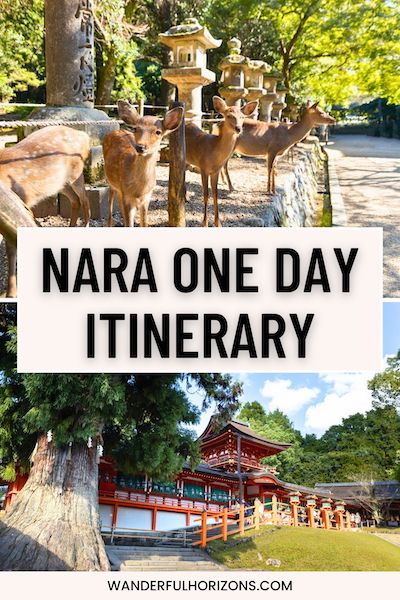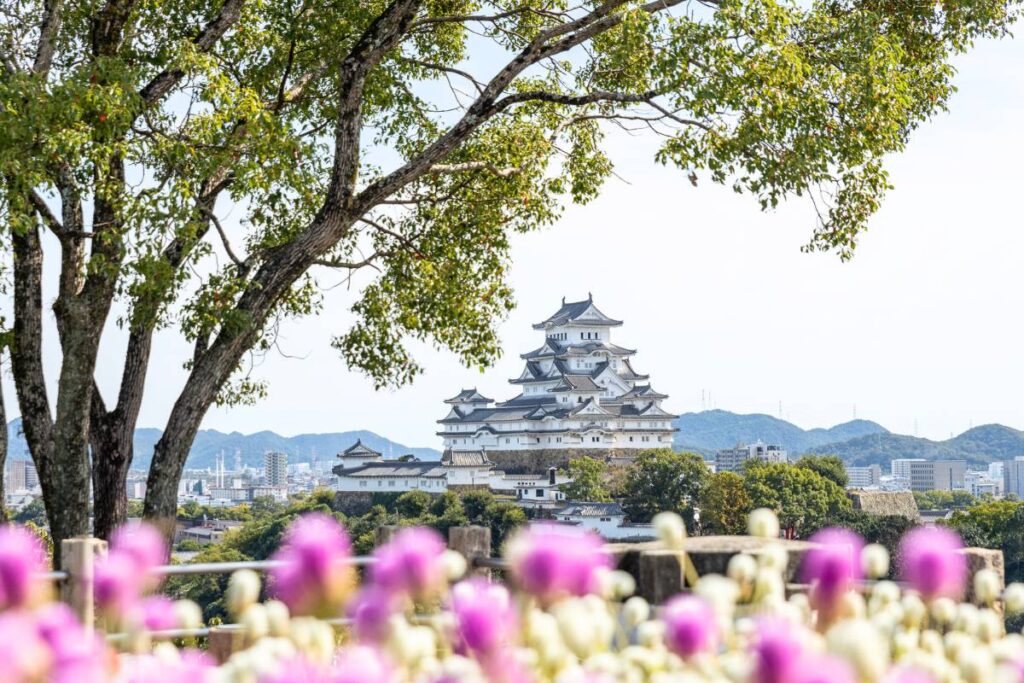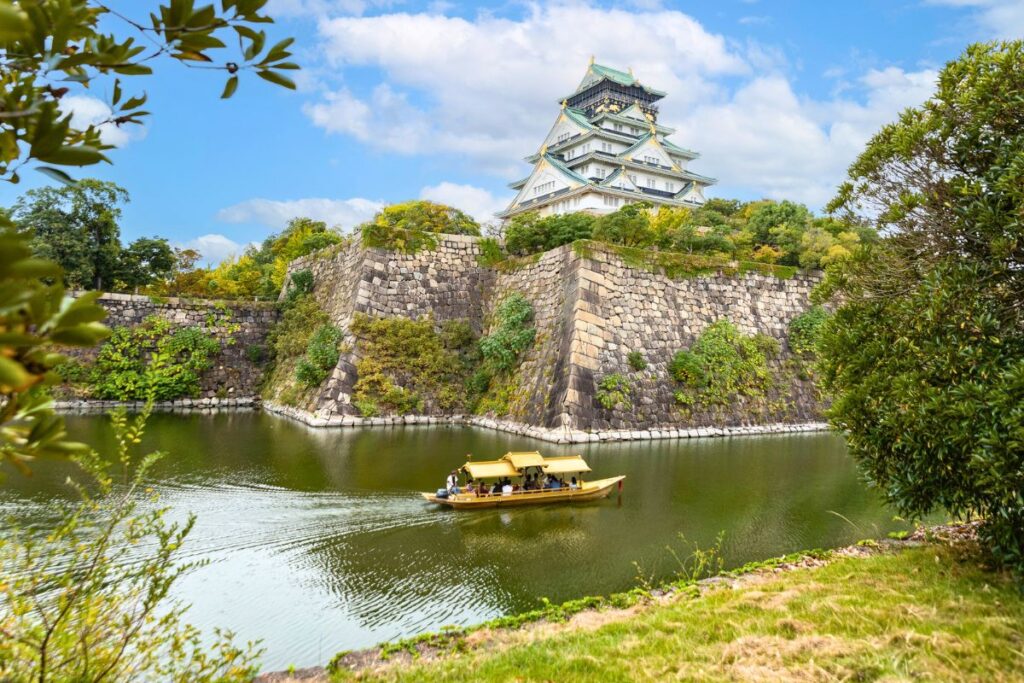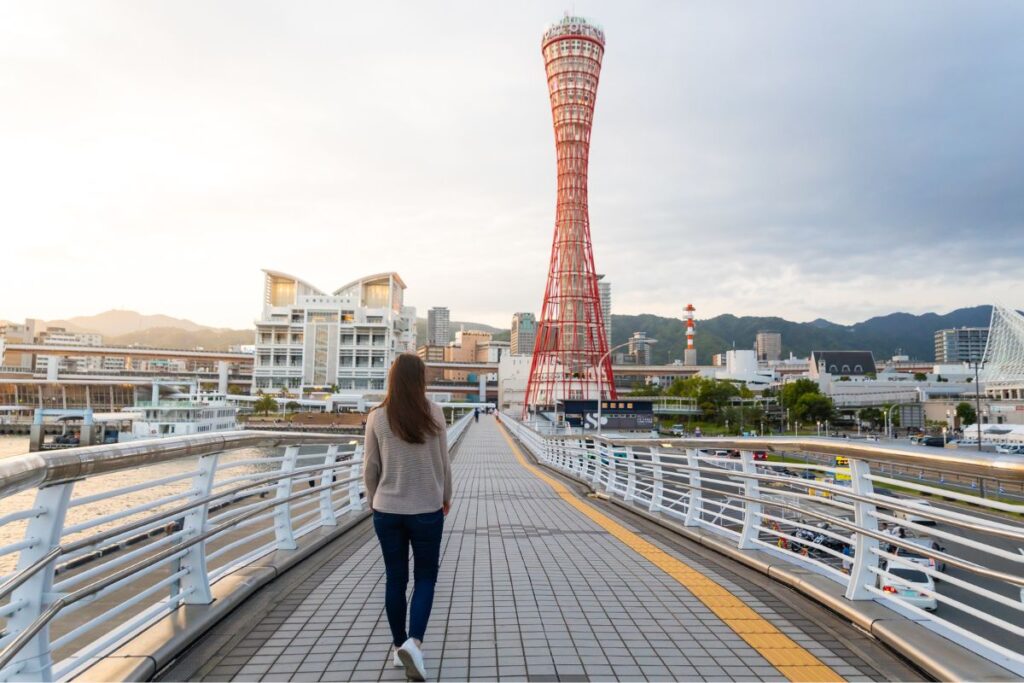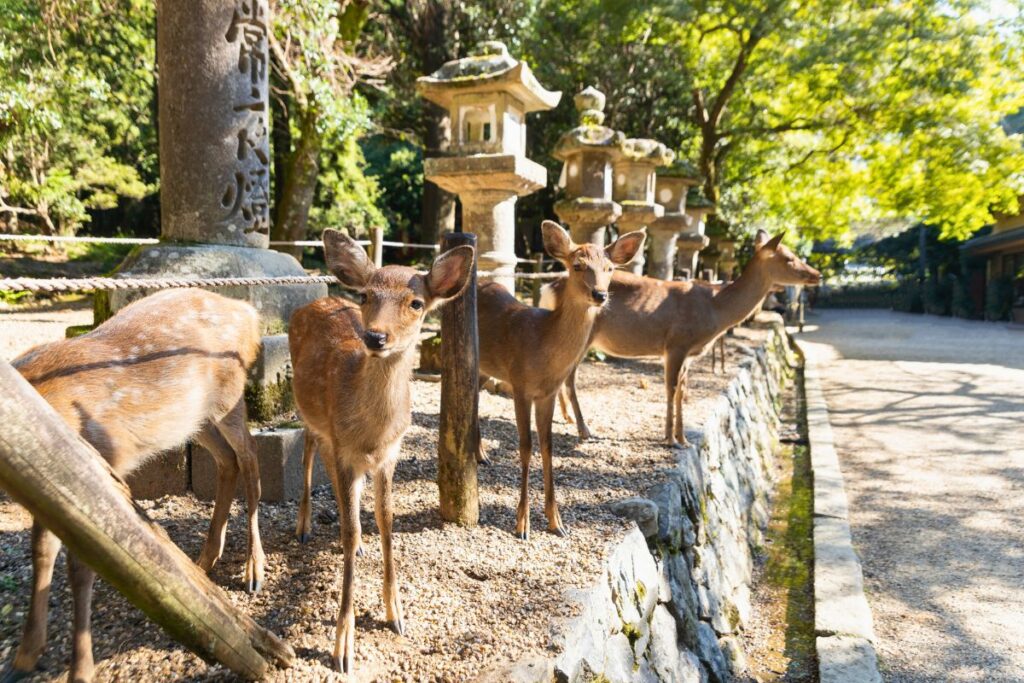
Planning a day trip to Nara? Don’t worry! I’ve got you covered with this ultimate Nara 1 day itinerary!
Renowned for its rich history, stunning natural beauty, and friendly free-roaming deer, Nara is a popular city – and one that I wholeheartedly recommend.
In fact, I recently had the opportunity to spend a weekend in Nara and was thoroughly enchanted by the city’s unique blend of nature and history.
As Japan’s first permanent capital city, Nara predates Kyoto and is home to some of the country’s oldest and most important historical landmarks. Many of which, might I add, are located in the beautiful Nara Park.
Here, you’ll discover awe-inspiring temples, vibrant shrines, tranquil ponds, and peaceful gardens, all set against the backdrop of an incredible landscape.
What’s more, the city offers a serene atmosphere and almost magical charm, making it the perfect escape from the hustle and bustle of larger cities.
Add in the fact, that Nara is situated only a short train ride away from Osaka and Kyoto – and you’ve got yourself the ideal day trip destination
That being said, let’s dive right in and discover all there is to know about planning a 1 day Nara itinerary!
*Please note: This post contains affiliate links to trusted partners. If you make a purchase using these links, I will earn a commission at no extra cost to you. Thank you for your support!
Planning a last-minute trip to Nara?
Here are a few quick recommendations for you!
I suggest booking these services and activities in advance!
🚅 Getting There:
– Japan Rail Pass (Great option if you plan to travel all over Japan)
– Individual Shin Tickets (Will likely be cheaper if you don’t plan to visit many cities)
🛏️ Hotels:
– Piazza Hotel Nara (Mid-range hotel located near Nara JR Station)
👣 Activities & Tours:
– Guided Tours of Nara (There are lots of options to explore!)
Best Time to Visit Nara

Fall is a great time to visit Nara!
Like much of Japan, the best time to visit Nara is either in the spring or in the fall.
During both of these seasons, you can expect to encounter pleasant weather with minimal rain. Plus, the landscape is absolutely beautiful with cherry blossoms in spring and autumn leaves in fall.
However, it is worth mentioning that these seasons (especially spring) can be quite busy, as they are peak travel times for Japan.
If you wish to avoid this, you can visit Nara in the winter instead. While temperatures will be cooler, there are typically fewer crowds and more affordable prices.
And finally, we have summer – which can be very hot and humid. Given the amount of walking you’re likely to do in Nara, I don’t really recommend visiting the city around this time of the year.
A Note on Japanese Holidays
Japan has a few major national holidays that significantly impact travel. These include Golden Week (end of April – beginning of May), Silver Week (mid-September), and New Years. Around these holiday periods, domestic travel peaks, prices increase significantly, and businesses may temporarily close down. Given this, I generally recommend, if at all possible, that visitors avoid travel to Japan during these times.
How to Get to Nara
The city of Nara lies in the midst of the Kansai Region, just inland along the eastern coast of Honshu Island.
It’s situated quite close to the urban centers of Osaka and Kyoto – so it’s a very popular day trip destination from both cities.
While there isn’t an airport located here, Nara is home to two major train stations, the JR Nara Station and the Kintetsu-Nara Station. Both of which offer direct service to the region’s major cities.
Kyoto to Nara
For those coming from Kyoto, the fastest and easiest way to travel to Nara is via the rapid express train.
There are two options available – there’s the Nara Line which travels between Kyoto Station and the Nara JR Station. As well as the Kintetsu-Kyoto Line which provides transportation between Kyoto Station and Kintetsu-Nara Station.
Both routes are direct and take about 45 minutes, so it really doesn’t matter much which one you choose.
Just be sure to double-check and ensure that you’re boarding a rapid express train!
There are also local trains that travel along these same routes – but they take much longer as they make more frequent stops along the way.
Osaka to Nara
If you’re traveling from Osaka, there are a few options for you to consider as well, depending on where you are in the city.
If you’re coming from the Namba/Dontonbori area, I’d recommend taking the Kitetsu-Nara Line. There’s a rapid express train that travels this route from Osaka-Namba Station to Kintetsu-Nara Station. The travel time for this is about 45 minutes.
Meanwhile, for those traveling from the Umeda area, there’s the Osaka Loop Line. Along this route, you can take a rapid express train from Osaka Station to the Nara JR Station. The travel time for this one is about 50 minutes.
Regardless of the route you take, you’ll again want to ensure that you’re utilizing a rapid express train.
Like Kyoto, there are also local trains in Osaka that travel these same routes. And they take much longer to reach their final destinations as they make many more stops along the way.
How to Get Around Nara
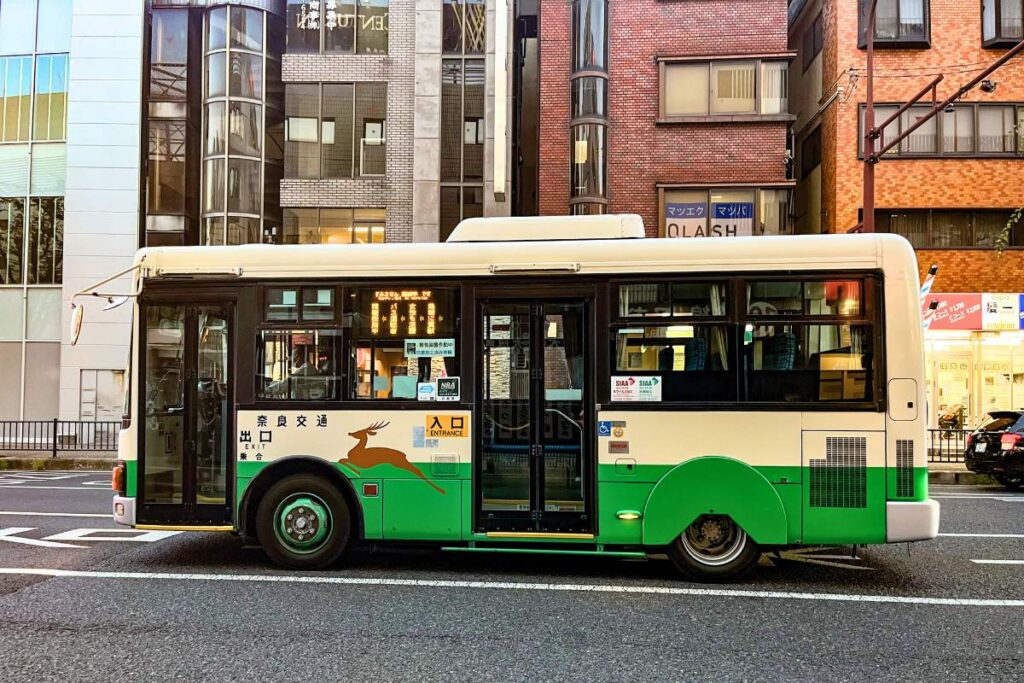
Public buses are common in Nara.
The main touristy area of Nara (including Nara Park) is very walkable – so it’s quite easy to get around and visit the major attractions.
However, if you prefer, there is also a public bus system that offers transportation around the city.
Of particular note is the Nara City Loop Bus, which travels to both train stations and makes several stops in and around Nara Park.
To utilize this bus, you can either purchase a day pass from the bus information station or use an IC card.
For those who may not be familiar, an IC card is basically a prepaid, refillable transit card. They can be purchased from most train stations and are compatible with many forms of public transportation throughout Japan.
Pro Tip: One of the best navigation apps for Japan (and my personal go-to) is Google Maps, so be sure to download it and have it ready to go! It’s great when utilizing public transportation and even comes in handy when walking around!
Map of Nara, Japan
To help you plan your trip, here’s a map overview of all the places mentioned in this 1 day Nara itinerary!
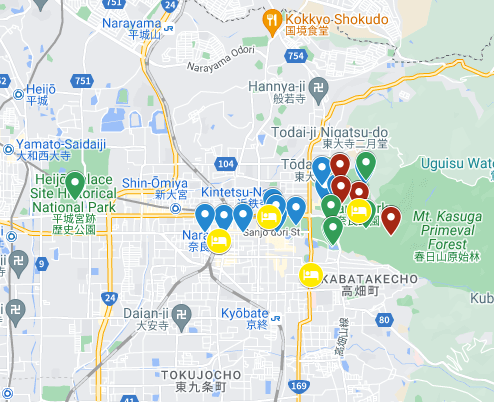
If you’d like to view an interactive version of this map, click here!
Nara 1 Day Itinerary: Overview
Don’t have time to read the article in full? Here’s a quick recap of my suggested itinerary for 1 day in Nara.
- Nara’s Sacred Deer: Arguably, the most famous attraction in Nara, the deer here are not only friendly but polite as well! They will even bow to you if you offer them crackers!
- Kofuku-ji Temple: Dating back more than 1300 years, Kofuku-ji is one the oldest Buddhist temples in Japan. It’s particularly known for its giant 5-storied pagoda.
- Isuien Garden: A traditional Japanese garden, Isuien offers a quiet, peaceful escape from the busy streets of Nara – complete with serene ponds and stunning views.
- Todai-ji Temple: Home to the country’s largest bronze Buddha statue, Todai-ji once served as the head temple for all Buddhist temples in Japan.
- Kasuga-Taisha Shrine: Known for its lanterns, which number in the thousands, Kasuga Taisha is not only beautiful, it’s also one of the most sacred shrines in the country.
- Sanjo Dori Street: Traveling between Nara Park and the JR Station, Sanjo Dori is a lively shopping street home to a number of local shops, restaurants, and bars.
Nara 1 Day Itinerary: Explained
On that note, let’s jump right in and discuss in detail the perfect 1 day Nara itinerary. I’ve included the city’s most popular attractions, as well as a few alternatives for you to consider. Feel free to pick and choose and adapt this itinerary as you see fit!
Pro Tip: Be sure to swing by the Visitor’s Center and grab a tourist map before venturing out into the city. They’re very detailed and quite helpful! There’s a Visitor’s Center located next to both train stations – so it’s a quick pit stop to make.
Spend Time with Nara’s Sacred Deer
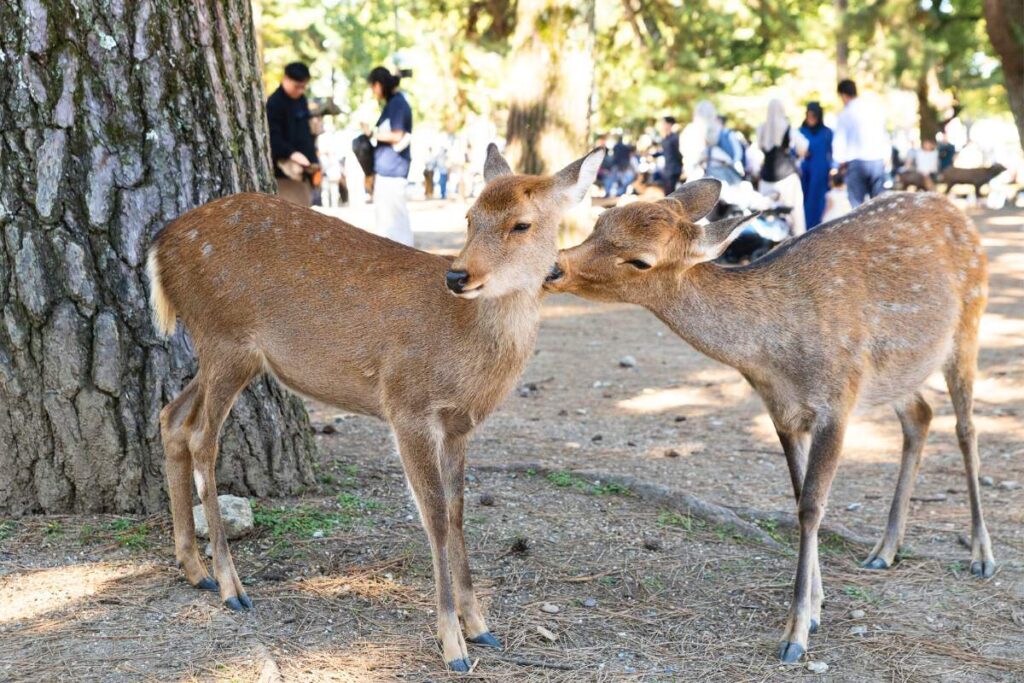
Nara is home to a very large population of Sika deer. While estimates vary, it’s thought that more than 1200 deer live in and around Nara Deer Park.
Similar to those found on Miyajima Island, the deer here are sacred and were once thought to be messengers of the gods.
In fact, they’re so important to Japanese culture, that they’re officially protected by the government as natural monuments.
As you wander around the park, you’ll likely encounter these deer – chances are they’ll walk right up to you in search of food.
Feel free to pet them, take photos, and feed them crackers. Just make sure to bow before you hand over any food – if you do, many of them will bow back, it’s very cute!!
You can find special deer crackers for sale throughout the park. These crackers are specifically formulated to be safe and nutritional for the deer – so please don’t feed them anything else!
A Note on the Deer in Nara Park
It’s important to remember that the deer in Nara are wild animals. Even though they are used to humans and will openly approach you, it’s imperative that you be respectful and mindful of your actions. The deer have been known to get aggressive if provoked and can be especially reactive during mating season (in the fall).
Discover Kofuku-ji Temple
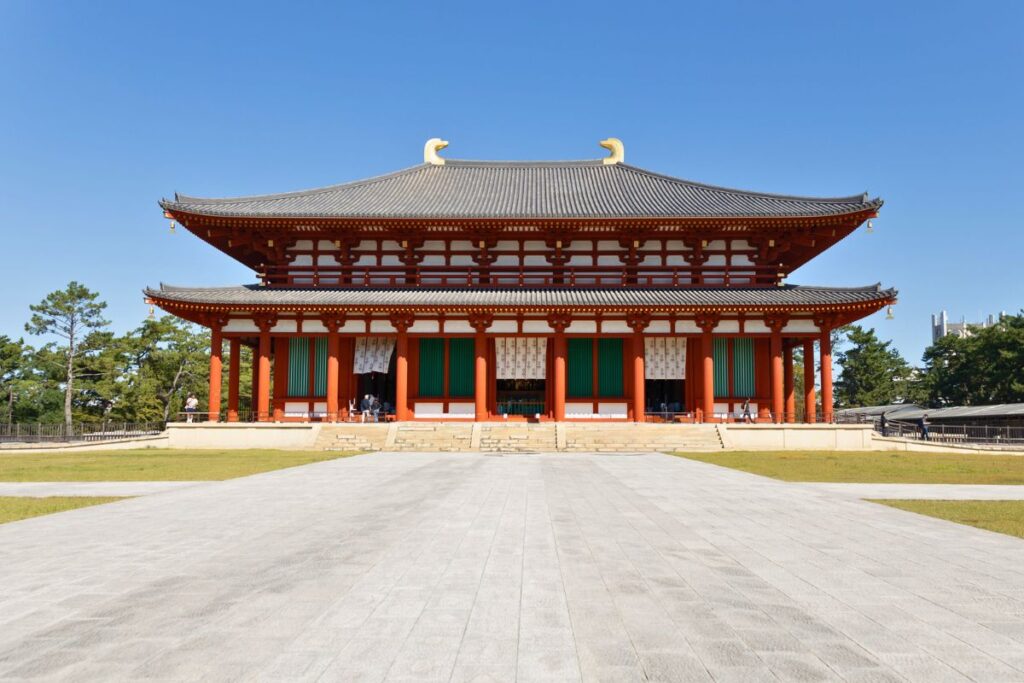
A UNESCO World Heritage Site, Kofuku-ji is one of Japan’s oldest Buddhist temples, dating back to the 7th century.
It also happens to be home to a very famous five-storied wooden pagoda, which to this day continues to serve as an iconic symbol for the ancient capital of Nara.
Measuring 50 meters in height, this stunning pagoda is the second tallest wooden pagoda in all of Japan.
In addition to this, the temple complex also encompasses several worship halls, a three-storied pagoda, and a National Treasure Museum.
Please Note: The five-storied pagoda at Kofuku-ji Temple is currently undergoing major renovations and remains covered at this time. Work on the pagoda is expected to be completed in 2031.
Appreciate Isuien Garden
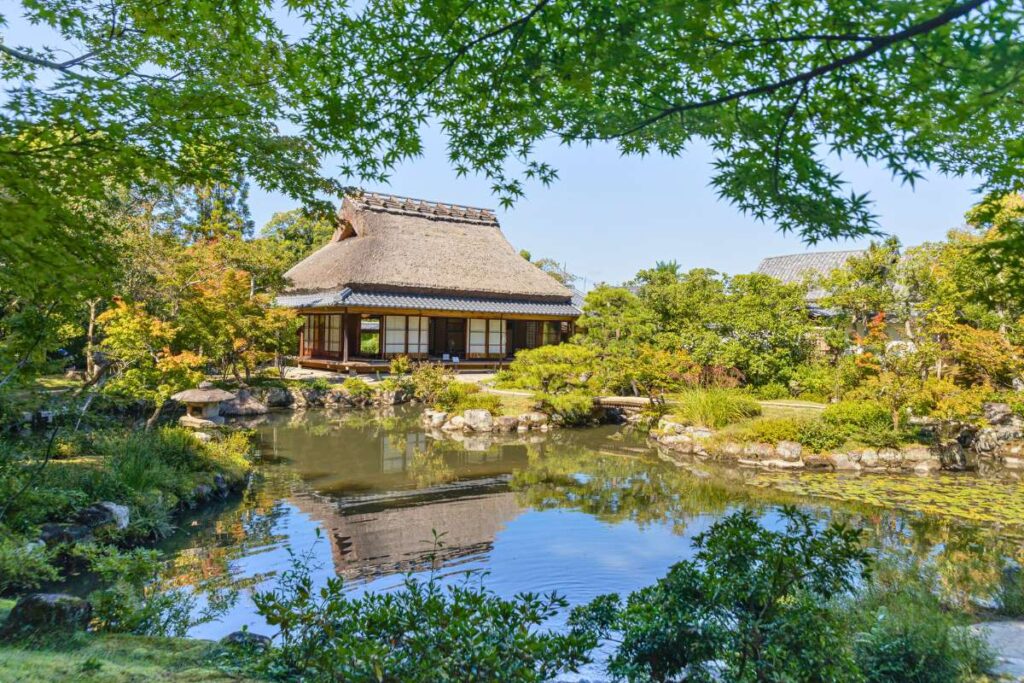
Designated a “place of scenic beauty” by the Japanese government, Isuien Garden is a traditional Japanese garden that offers a peaceful escape from the city of Nara.
Here, you’ll find two gardens connected over time. A front garden that dates back to the Edo period (17th century) and a back garden from the Meiji period (early 20th century).
Both offer serene landscapes with walking trails, ponds, vibrant greenery, and traditional tea houses.
The property is also home to a small museum, the Neiraku Museum of Art. This modest establishment displays a variety of artwork, pottery, and historic relics from across Asia.
Explore Todai-ji Temple
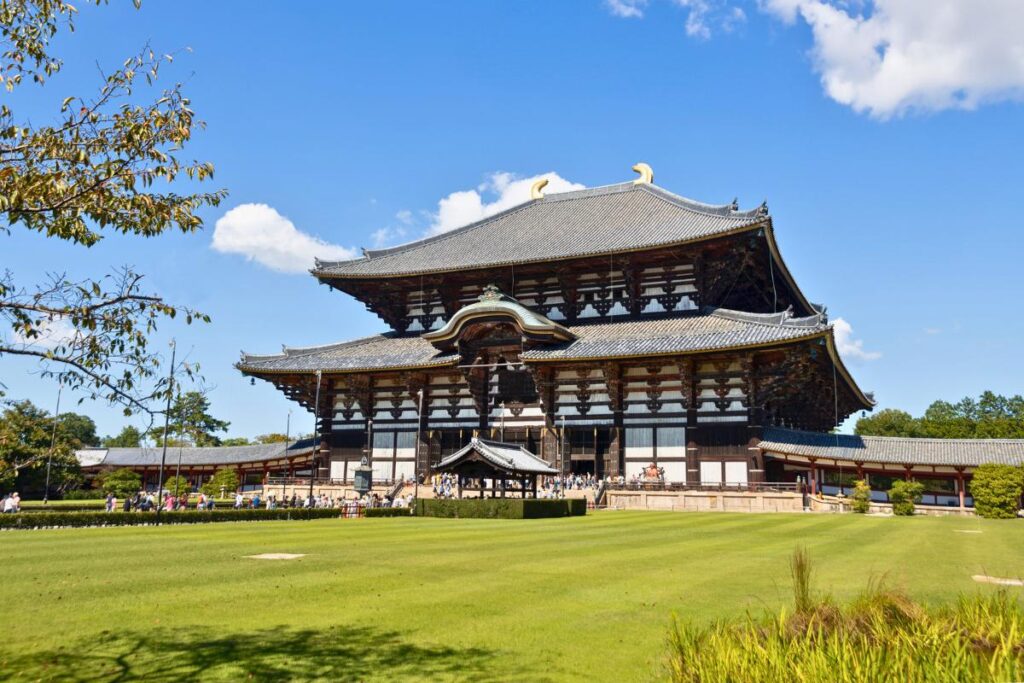
Dating back to the 8th century, Todai-ji Temple is home to Japan’s largest bronze Buddha statue, which is housed in one of the largest wooden structures in the entire world.
A UNESCO World Heritage Site, the temple complex once served as the head temple for all Buddhist temples in Japan.
In fact, Todai-ji became so important and so powerful that in 784 the government moved Japan’s capital city from Nara to Kyoto. This was done in an attempt to limit the temple’s influence on government affairs.
Today, the temple is one of the most famous sites in Nara and is frequented by visitors from across the globe.
While you’re here, be sure to explore the temple’s ground in full. They’re massive and encompass a number of notable attractions, including the Nandaimon Gate, Todai-ji Museum, Nigatsu-do Hall, Hokke-do Hall, and Kaidan-in Hall.
Admire Kasuga-Taisha Shrine
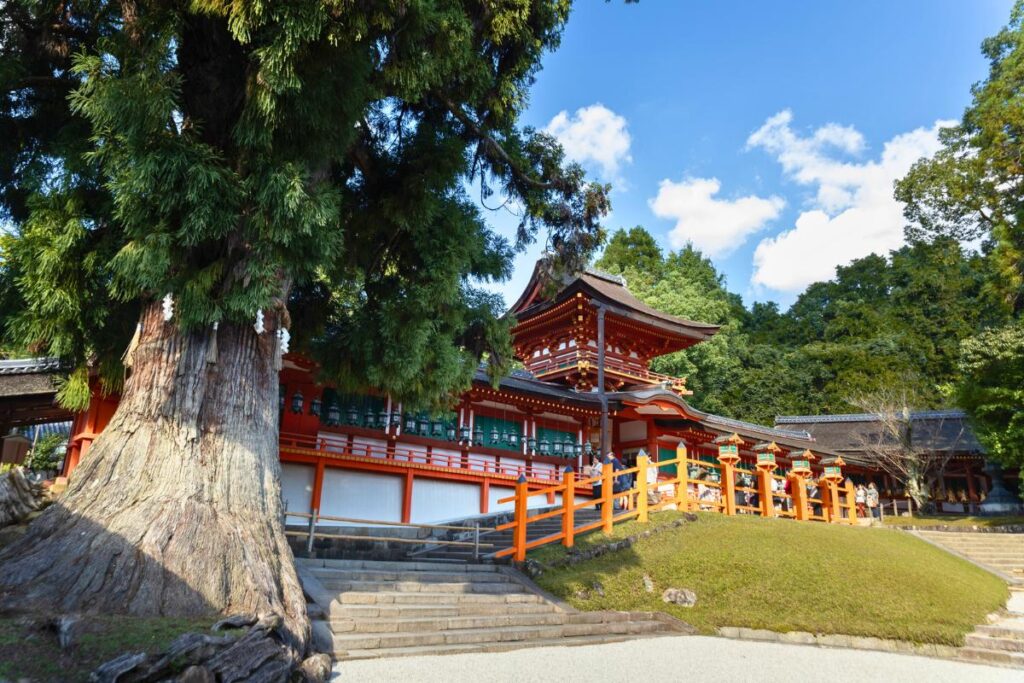
Another UNESCO World Heritage Site, Kasuga-Taisha Shrine is one of the most beautiful destinations within Nara Park.
Set deep within the forest, the bright vermilion structure is surrounded by lush greenery and features thousands of traditional Japanese lanterns.
Originally constructed in the 8th century, this Shinto shrine is considered to be one of the most sacred, as it houses four separate deities. One of whom, Takemikazuchi no Mikoto, is said to have traveled to Nara on the back of a deer.
This legend is what led to the widespread belief that Nara’s deer are sacred entities connected to the gods.
Pro Tip: You’ll find lots of deer wandering the paths around Kasuga-Taisha Shrine, so be sure to bring along some crackers when you visit!
Wander Along Sanjo Dori Street
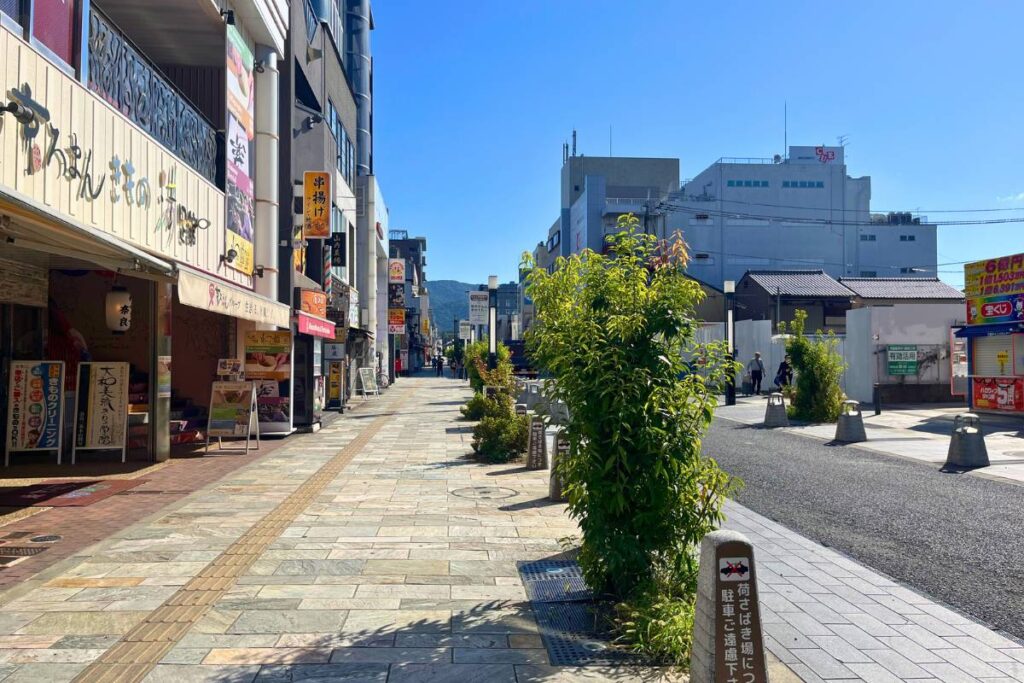
As the main shopping street in Nara, Sanjo Dori is home to a variety of local shops, restaurants, bars, and cafes.
Here, you’ll find several popular establishments including Nakatanido, which is famous for its mochi pounding, and Melon de Melon, which offers a wide variety of melon bread.
In addition to this, the street connects with other notable destinations such as Higashimuki Shopping Arcade, Nara Park, JR Nara Station, and Kintetsu-Nara Station.
In short, it’s the perfect place to shop for souvenirs and grab a bite to eat!
Nara Half Day Itinerary
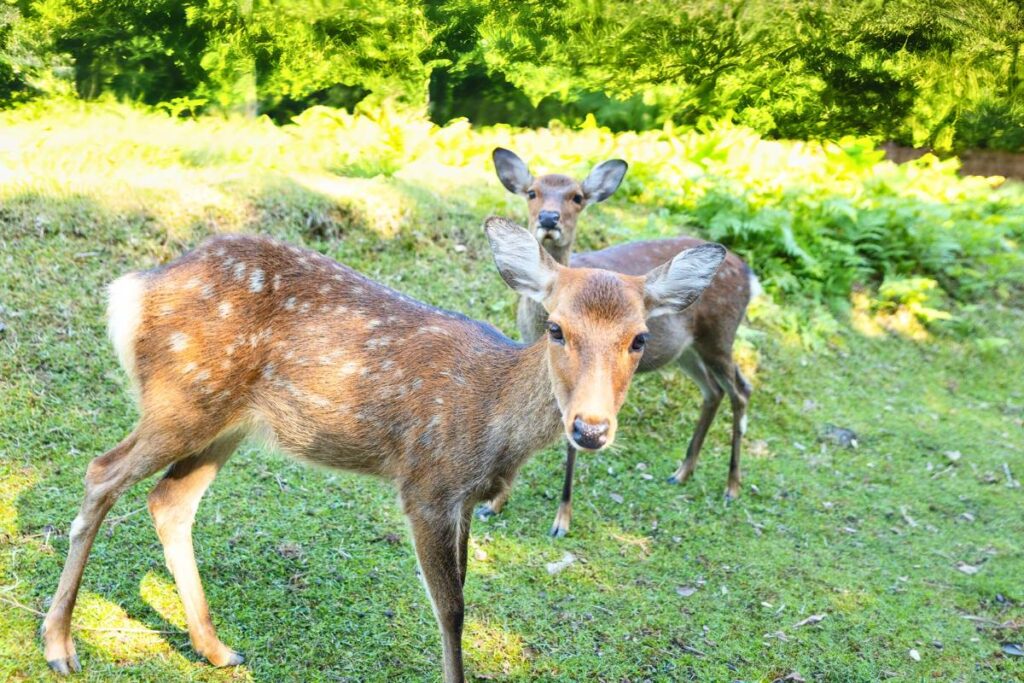
While I recommend spending at least a full day here, it is possible to visit Nara for half a day. Although you won’t be able to see everything, you should have enough time to hit up the city’s most famous attractions.
Here’s my suggested itinerary for a Nara half day trip:
- Visit Todai-ji Temple: This is one of Nara’s most famous and historical sites, so definitely set aside time to visit it. It can get quite busy and a line is likely to form at the entrance to the main hall, but it moves quickly – so don’t let this scare you off. Once inside, be sure to venture into the temple to view the Buddha statue up close.
- Stop By Kasuga Taisha Shrine: From Todai-ji, head over to Kasuga-Taisha Shrine. It’s a bit far away but is well worth the visit. Here, you can tour the shrine or simply wander along on the ground’s lantern-lit pathways. You’re likely to find several deer in this area as well!
- Take a Peek at Kofuku-ji Temple: Chances are, you’ll be running out of time when you get to Kofuku-ji Temple. So I recommend doing a quick walk-through tour of the property on your way back to the train station! This temple is located quite close to the main road, so it’s an easy side trip to make.
Tips to Make the Most of Your Half Day Nara Itinerary
To make the most of your short but sweet Nara itinerary, here are a few tips and tricks to keep in mind!
- Utilize Public Transportation: Since you’re short on time, your best bet is to make use of the local bus system. To help you navigate this, I recommend either using Google Maps or grabbing a physical map from the Visitor’s Center.
- Meet the Deer As You Go: You’ll find the city’s famous deer spread throughout the park, so there’s really no need to make a special trip to any particular location. Simply wander along to your next destination, and you’ll come across them as you go!
- Allot Ample Time Between Locations: Even if you make use of the local bus, you’ll still need to walk some – and will probably get distracted by the park’s deer along the way! So don’t rush around from place to place, save time to enjoy the walk, appreciate the views, and pet the deer.
- Don’t Overpack Your Nara Itinerary: Don’t try to see everything – it’s not possible. Instead, pick and choose a few things that interest you the most and focus on those. And be flexible – see how you do for time and adjust accordingly. Some attractions might take up more time than expected, while others may be super quick.
Other Things to Do in Nara
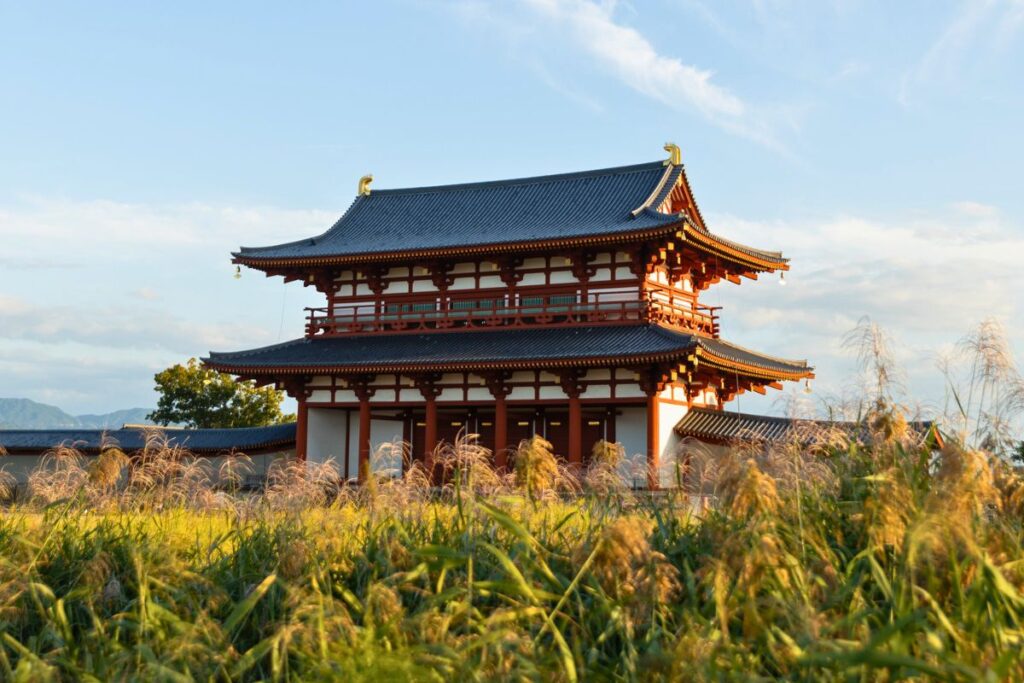
Suzaku-mon Gate at Heijo Palace Historical National Park.
Interested in adjusting this Nara day trip itinerary? Or maybe you’re contemplating a longer stay? If so, consider visiting some of these other popular attractions as well!
- Heijo Palace Site Historical National Park: A UNESCO World Heritage Site, Heijo Palace served as the Imperial Palace of Japan during the 8th century. Although many of the buildings were destroyed over time, the city is currently in the process of rebuilding and restoring them.
- Nara National Museum: A prominent art museum, the Nara National Museum is known for its exhibits on Japanese Buddhist art. You’ll also find a variety of relics from Nara’s imperial period here.
- Manyo Botanical Gardens: Spanning more than 7 acres, the Manyo Botanical Gardens are home to approximately 300 varieties of plants. The most famous of which is the purple Wisteria, which typically blooms during the month of May.
- Todai-ji Nigatsu-do: Overlooking Nara Park, Nigatsu-do is a smaller Buddhist temple located within the Todai-ji complex. It’s particularly known for its incredible sunset views.
- Sagi-ike Pond: Situated a bit off the beaten path, Sagi-ike is a small, serene pond with an overwater gazebo. The area is especially beautiful in the spring, as the pond is surrounded by a number of cherry trees.
What to Eat in Nara
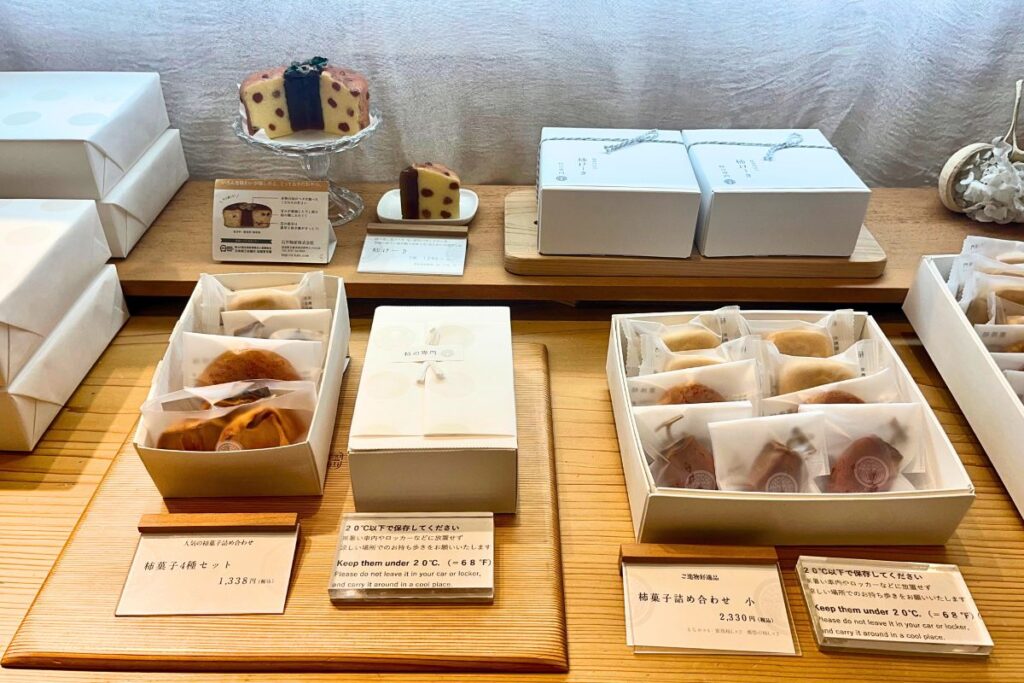
A variety of persimmon sweets.
Like the rest of Japan, the food in Nara is incredible – and unique! In fact, there are several regional dishes that can only be found here. While you won’t have time to sample it all, here are a few dishes that you should definitely try to prioritize.
- Persimmon Sweets: Nara is one of Japan’s top producers of persimmon, an almost tomato-like fruit that grows on trees. Vendors throughout the city are known for creating a variety of sweets using various forms of persimmon.
- Kakinoha Zushi: Local to the Kansai region, Kakinoha Zushi is sushi that’s wrapped in persimmon leaves. It typically features mackerel or salmon, but can also be made using a variety of fish.
- Kuzu Mochi: Similar to a rice cake, kuzu mochi is made using kuzu starch and water instead of rice. Kuzu starch comes from the root of the kudzu plant, which is native to Japan.
- Chagayu: Also known as tea rice porridge, chagayu is a rice porridge that’s made with tea. A popular breakfast staple in Nara, the dish typically features green tea broth.
- Miwa Somen: Miwa somen is a noodle dish that features very thin noodles. Typically served cold, the dish also includes a variety of toppings such as soy sauce, sake, pickles, seaweed, and ginger.
Where to Stay in Nara
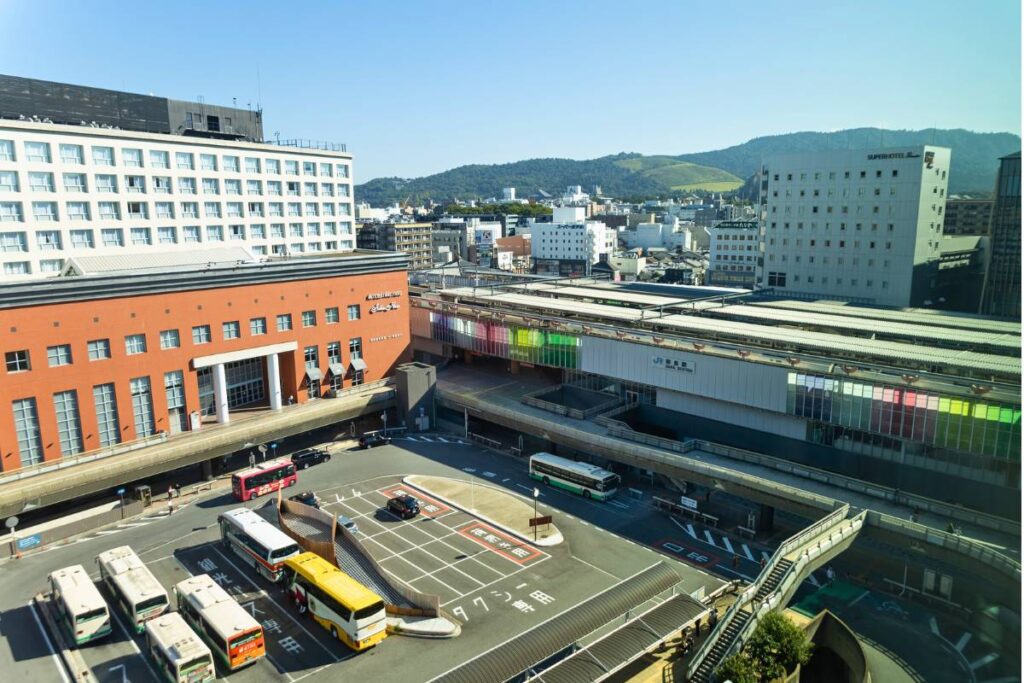
The area around the JR Station is a great place to stay!
If you have the ability to do so, I highly recommend spending at least one night in Nara. Not only will it provide you with more time to explore – you’ll have the chance to experience the city without the crowds that typically flood in during the day. For those interested, I’ve included below some of the best places to stay in Nara.
- JR Nara Station: The area around Nara Station is home to a variety of hotels, all of which offer convenient access to public transportation. In addition to this, you’ll find several restaurants, bars, cafes, and local shops nearby.
- Kintetsu-Nara Station: The hotels near Kintetsu Station offer easy access to public transportation, as well as Nara Park. Nearby, there are also several shopping areas, including Higashimuki Shopping Street and Sanjo Dori Street.
- Nara Park: There are several small hotels and ryokans that are located in and around the boundaries of Nara Park. These accommodations are perfect for first-time visitors who plan to extensively explore the deer park.
- Naramachi: A historic district, Naramachi was once the merchant district of Nara. Today, it’s known for its calm atmosphere and traditional ryokans or guest houses.
Frequently Asked Questions About Planning a Day Trip to Nara
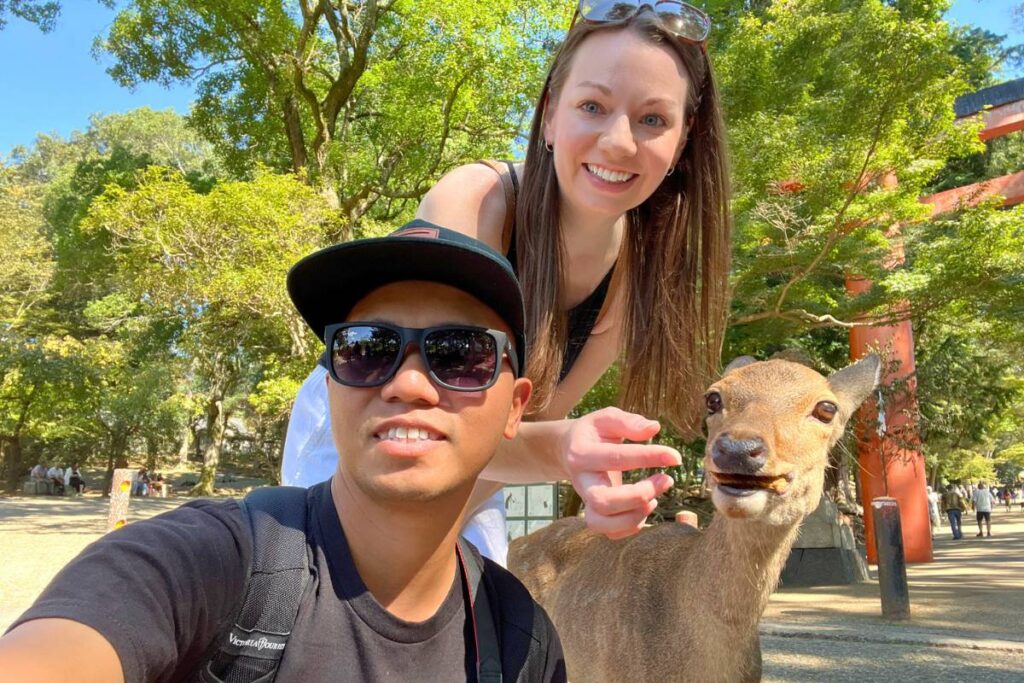
With my cameraman, aka husband 🙂
Here are my thoughts on some commonly asked questions about planning a 1 day itinerary for Nara, Japan!
Is Nara Worth Visiting?
Without a doubt, Nara is definitely worth visiting. Honestly, I would go just to see the deer – they’re that cute!! But if animals aren’t your thing, the city is also home to a plethora of historical sites, many of which are UNESCO World Heritage Sites. On top of that, it offers incredible natural scenery, great local cuisine, and friendly, small-town vibes.
Is One Day Enough for Nara?
Yes, I’d say that one day in Nara is enough. Especially if you only plan to spend your time in and around Nara Park – which is where most of the attractions are anyway. Just be prepared for a long day with a lot of walking! But, don’t worry, it’s worth it!
Is It Better to Go to Nara From Osaka or Kyoto?
Honestly, it really doesn’t matter. It’s very easy to travel to Nara from Osaka and Kyoto – and there isn’t even much of a difference in terms of travel time. Given this, I’d recommend doing whatever works best for you and your itinerary.
What Is the Best Time of Day to Go to Nara Park?
I’d say the earlier the better. First of all, there are fewer people around early in the morning, so it’s easier to visit the different attractions. In addition to this, the deer are much more attentive and interested in people – probably because they’re hungry! I had a bunch of leftover deer crackers that I was trying to give away in the late afternoon and I had a hard time finding a deer that would eat them. It seems that by the end of the day, the deer have had their fill and just want to be left alone!
Which is Better: Kobe or Nara?
It’s hard to say which is better because Nara and Kobe are both amazing cities. And I highly recommend them both. That being said, if you only have time to visit one, I’d say base the decision on your personal preferences. In short, Nara is going to be a better option if you’re looking for a smaller destination with historical and natural attractions. Meanwhile, Kobe would be the best option, if you’d like a city that offers more urban amenities – think restaurants (Kobe beef!), shopping, nightlife, etc. Again, they’re both great destinations, so you really can’t go wrong either way!
Which Is Better: Nara or Miyajima Island?
This is a toss-up, as both destinations offer incredible natural scenery, friendly wildlife, and historical landmarks. Ideally, if you can, I say visit them both. But if you have to choose just one, I’d offer the following recommendations. Go to Nara, if you’re really interested in seeing the deer. I think they’re friendlier here and they bow! But, if you’re more interested in avoiding the crowds and partaking in adventurous activities, go to Miyajima Island. It’s very easy to venture off the beaten path here, as there are several hiking trails to explore.
Final Thoughts: Nara 1 Day Itinerary
So there you have it, my top recommendations for a 1 day Nara itinerary. Hopefully, this guide is helpful in planning your own trip to this historic city.
Regardless of what you decide to do, I’m sure you’ll have an incredible time. After all, Nara is a magical destination – one that offers unique experiences and the cutest wildlife!
Planning your own Nara itinerary for 1 day? What are you most excited to do? Let me know in the comments below!
Like this 1 day Nara itinerary? Pin it now for later!
